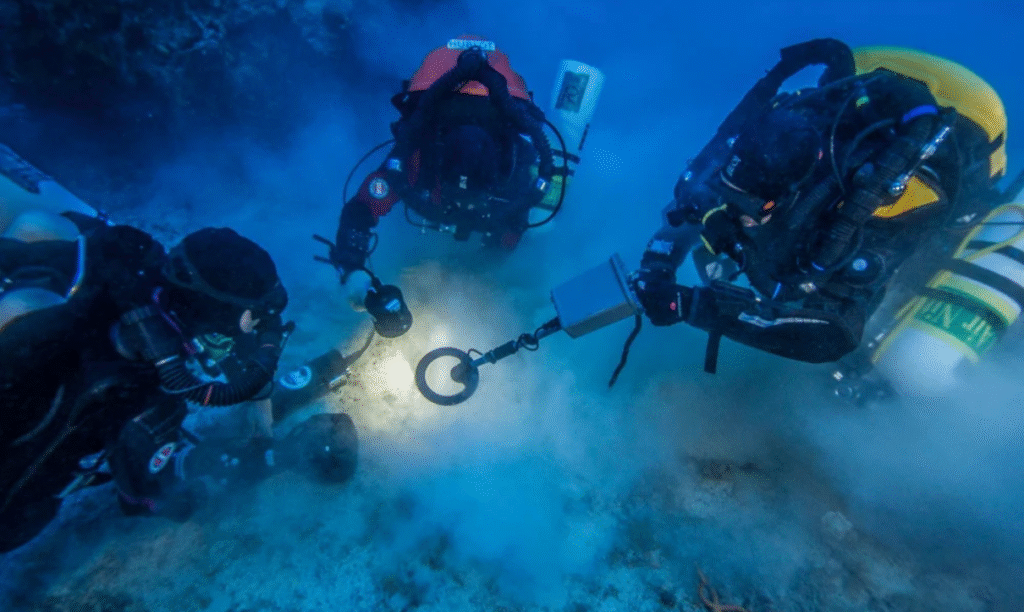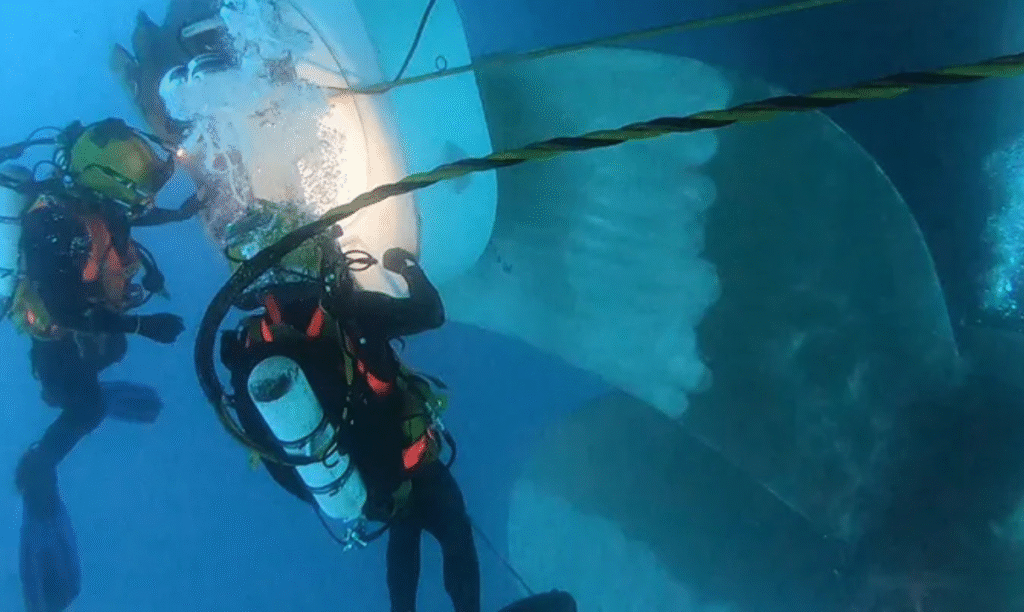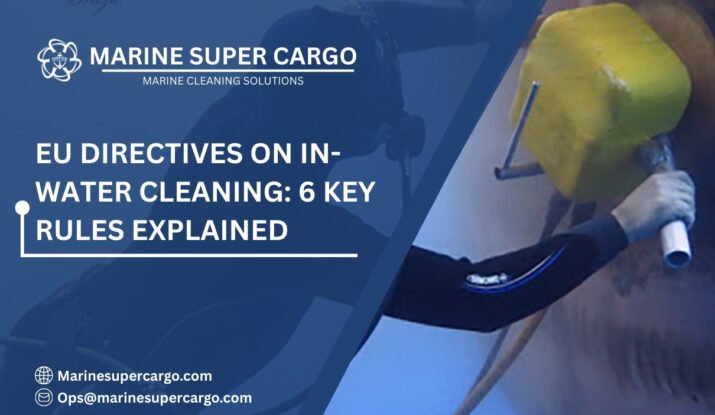Maritime operations have always walked a fine line between efficiency and sustainability. Today, the EU directives on in-water cleaning make that balance even more critical. At first glance, these regulations may appear as hurdles in your path, but when applied strategically, they become stepping stones toward safer, greener, and more cost-effective shipping operations.
If you’re a ship owner, operator, or manager, chances are the pressures of compliance can feel overwhelming. Ports across Europe now demand stricter environmental safeguards, particularly when it comes to hull maintenance. Biofouling — the accumulation of marine life on hulls — increases drag, wastes fuel, spreads invasive species, and disrupts fragile marine ecosystems.
The EU directives on in-water cleaning aim to curb these issues, but also present opportunities. With the right approach, compliance fuels cost savings, enhances a company’s reputation, and drives operational efficiency. In this comprehensive guide, we’ll explore exactly how, breaking down the complexity of these regulations into actionable insights you can use to stay ahead.
Why In-Water Cleaning Matters
Imagine dragging a heavy fishing net behind your ship every time you sail. That’s what biofouling feels like to your vessel — it slows you down, drives up fuel costs, and increases greenhouse gas emissions. Globally, shipping accounts for nearly 3% of carbon emissions, and hull cleaning is a key lever for change.
The EU directives on in-water cleaning target these challenges by ensuring that operators take preventive action, adopt safe cleaning technologies, and prevent pollutants or organisms from entering European waters. It’s not just about “cleaning” — it’s about reshaping the way the industry thinks about sustainability, efficiency, and responsibility. Also, read about underwater hull cleaning in Hsinking.
Foundations of EU Directives
The EU directives on in-water cleaning draw from international frameworks like the MARPOL Convention (see Marine Insight), IMO biofouling guidelines, and EU-specific environmental directives. What makes them unique is the combination of ecological priorities and operational controls.
Core principles include:
- Pollution Prevention: Hull cleaning debris cannot be freely released; capture technologies must be used.
- Uniform Standards: While implementation may vary between ports, EU Directives encourage consistent standards across member states.
- Risk Assessments: Pre-cleaning checks assess the biofouling risk and determine safe methods.
- Approved Methods Only: Abrasive, uncontrolled, or destructive techniques are restricted unless containment systems are in place.
- Transparency: Shipowners must keep verifiable cleaning records, subject to inspection and audits.
In essence, the EU wants a “clean hull, clean seas” approach that harmonizes safety with commerce.

Challenges Operators Face
Complying with EU directives on in-water cleaning can feel like navigating stormy waters. Common issues for operators include:
- High Initial Costs: Capture-and-contain systems or robotic technology require investment.
- Operational Delays: Designated cleaning areas can be limited, leading to scheduling bottlenecks.
- Fragmentation Across Ports: While the EU pushes harmonization, interpretation of directives differs by country.
- Crew Awareness: Miscommunication or lack of training can easily result in unintentional non-compliance.
Yet, these challenges come with clear solutions if addressed proactively.
Best Practices for Compliance
So how do you align your operations with EU directives on in-water cleaning while staying profitable? Here are proven strategies:
- Invest in Advanced Coatings: High-performance antifouling or foul-release hull coatings reduce biofouling buildup.
- Adopt Robotics and AI: Autonomous underwater vehicles and capture systems provide efficient, compliant cleaning.
- Integrate Compliance into Schedules: Plan cleaning alongside dry-docking or cargo cycles to minimize downtime.
- Document Rigorously: Build an unbroken chain of records — survey reports, method approvals, and disposal logs.
- Crew Training and Awareness: Educate teams on the exact criteria of EU rules and their long-term benefits.
Treat these practices like a compass — they don’t just keep you compliant, they keep your business on course.
The Benefits of Compliance
By implementing EU directives on in-water cleaning, operators unlock multiple long-term rewards:
- Fuel Efficiency Gains: Optimized hulls reduce drag, cutting fuel consumption by as much as 30%.
- Carbon Footprint Reduction: By aligning with IMO’s decarbonization targets, operators enhance their environmental reputation.
- Reduced Detention Risks: Compliance helps ships breeze through inspections across EU ports.
- Lower Long-Term Costs: Preventive cleaning prolongs hull coating life and prevents costly emergency maintenance.
- Reputational Advantage: Being seen as a proactive, eco-conscious operator matters — not just to regulators but also to clients and stakeholders.
It’s not just compliance — it’s a business advantage disguised as regulation. Also read about underwater hull cleaning in Colombia.
⚓ Expert Underwater Hull Cleaning with Marine Super Cargo 🌊
— Marine Super Cargo (@Marinsupercargo) September 19, 2025
A clean hull means better performance, lower fuel use, and smoother voyages. Marine Super Cargo offers top Underwater Hull Cleaning to keep your vessel efficient, compliant, and ready for every operation. pic.twitter.com/sVKAUCytuS
Future Trends in In-Water Cleaning
The future of EU directives on in-water cleaning will likely incorporate:
- AI-Powered Monitoring Systems: Sensors that predict fouling levels and recommend optimal cleaning times.
- Global Harmonization: With IMO and IAPH pushing best practices, EU standards may become a global benchmark.
- Robotic Cleaning Drones: Autonomous systems will reduce human diver risks and improve capture rates.
- Green Port Incentives: Ships demonstrating proactive, compliant cleaning may enjoy reduced fees or faster turnaround times.
- Sustainability as Currency: Eco-compliance could become a criterion for securing high-value shipping contracts.
The message is clear: the future is tech-driven, harmonized, and green. The operators who prepare today will lead tomorrow.

Turning Regulations into Strategy
Rather than seeing EU directives on in-water cleaning as barriers, smart operators see them as guideposts. Compliance not only helps reduce risks but also sets fleets apart in a competitive industry increasingly shaped by sustainability.
By adopting advanced technologies, training crews, and embracing eco-friendly solutions, ship managers transform regulatory hurdles into strategic stepping stones that fuel efficiency, resilience, and growth.
Conclusion
The EU directives on in-water cleaning are reshaping maritime operations across Europe, pushing fleets toward sustainability and efficiency.
- Compliance saves money through reduced fuel costs and extended coating lifespans.
- Eco-friendly approaches reduce invasive species and carbon emissions.
- Forward-looking operators turn compliance into a competitive advantage.
Embrace compliance as a business ally, not a burden. For customizable solutions that align with these directives, visit CleanShip.co to future-proof your fleet with eco-smart innovation.
FAQs:
Q1. What do EU directives on in-water cleaning cover?
They regulate underwater hull cleaning operations, requiring safe and environmentally responsible methods while preventing waste discharge in EU waters.
Q2. Why is biofouling a key concern in Europe?
Biofouling increases vessel drag, raises fuel costs, and spreads invasive organisms that threaten sensitive EU marine ecosystems.
Q3. What happens if I don’t comply with EU directives on hull cleaning?
Non-compliance may result in hefty fines, vessel detentions, and reputational damage across European port authorities.
Q4. Which technologies align best with the EU directives?
Robotic capture systems, eco-friendly coatings, and AI-driven monitoring technologies meet both EU and IMO compliance standards.
Q5. How will these directives evolve in the future?
Expect tighter alignment with global IMO frameworks, AI-supported predictive cleaning, and incentives for vessels adopting greener practices.


